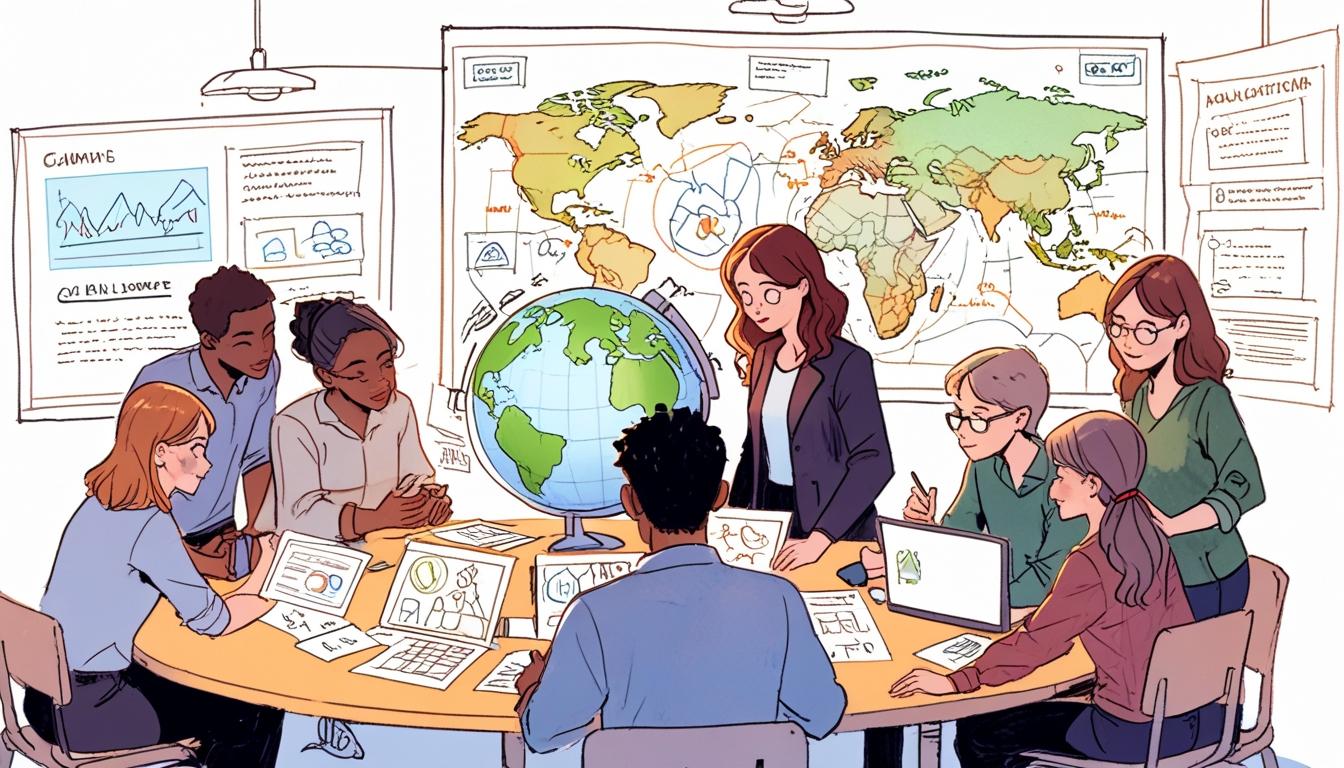In the evolving landscape of climate action, artificial intelligence (AI) has emerged as a pivotal force, yet concerns are mounting over unequal access and influence, particularly for developing nations. At the heart of this debate lies a significant financial commitment and a call for equitable technological empowerment.
At the 29th Conference of Parties (COP29) to the United Nations Framework Convention on Climate Change (UNFCCC) in late 2024, the Baku Climate Unity Pact was unveiled, pledging $300 billion annually by 2035 to bolster climate resilience across the Global South. This landmark agreement was hailed as a breakthrough in addressing climate vulnerabilities in developing countries. However, experts emphasise that financial resources alone will not suffice to rectify the systemic challenges faced by these nations.
UN Secretary-General António Guterres highlighted the risk of a growing divide in January 2025, warning that the world could fracture into AI "haves" and "have-nots," with poorer countries potentially being sidelined as affluent nations and corporations race to dominate AI technologies. His concerns were echoed by a United Nations Sustainable Development Group briefing titled Great Power, Greater Responsibility released in February 2025.
The core issue extends beyond mere access to technology—it involves who controls the AI systems and data shaping climate responses. For instance, AI models trained on datasets from cities like New York or Berlin may be ill-suited to predict floods in regions such as Bangladesh or prepare Mozambican communities for cyclones. Kirit S Parikh, Emeritus Professor at Mumbai’s Indira Gandhi Institute of Development Research, emphasised the importance of developing localised models: “Developing countries should build their own models. Collaboration is key, but confidence in local expertise must come first.”
Initiatives like the Green Digital Action, launched at the COP28 meeting, have sought to enhance digital accountability by bringing together over 40 governments and technology companies. Its flagship tool, the Greening Digital Companies dashboard, tracks corporate emissions to foster greater transparency. This initiative aims to harness AI’s potential, as AI-driven climate models have demonstrated the ability to reduce disaster-related damage by up to 30 per cent with as little as 24 hours' warning, according to a January 2025 Council on Foreign Relations report authored by policymakers Alice C Hill and Colin McCormick.
Nonetheless, persistent bias in AI applications remains a concern. Many advanced climate models are based on European weather patterns, limiting their accuracy and utility in monsoon-affected regions or drought-prone areas in Africa. Ayesha Bhatti from the Center for Data Innovation noted that while countries such as India possess significant scientific talent, they often lack access to the comprehensive datasets and computing power required to develop robust AI systems. A climate engineer based in Nairobi remarked, “Capacity development isn’t charity — it’s survival.”
The Paris Summit held in February 2025 marked a pragmatic turning point by focusing on the immediate impacts of AI rather than speculative risks related to autonomous systems. However, this approach attracted criticism for sidelining urgent ethical issues including data ownership and benefit distribution. The summit’s credibility was further diminished by the absence of endorsements from the United States and the United Kingdom, enabling major tech companies from Silicon Valley to consolidate influence. The summit also underscored the tension between national sovereignty and the dominance of multinational technology giants like Google and Microsoft in AI infrastructure.
Looking ahead, the Bonn Climate Conference scheduled for June 2025 is anticipated to be decisive, with crucial negotiations on technology transfer and climate finance set to resume. For countries such as Malawi, where severe drought conditions persist, delays in securing appropriate technologies and resources pose significant threats. Despite commendable UNFCCC efforts to advocate for localised solutions, the lack of open-source AI platforms and shared patent frameworks continues to bind vulnerable states to externally developed tools that may not align with their unique climatic challenges.
A December 2024 policy brief, Unpacking COP29, authored by Soenke Kreft, Saskia Werners, and Kees van der Geest, warned that hindrances in technology transfer could undermine the net-zero technological ambitions set during COP29. However, there are promising signs. For example, India’s advancements in developing homegrown AI applications to enhance crop resilience illustrate the potential benefits if the Global South receives equitable opportunities in technological development.
Ultimately, experts like Professor Parikh argue for a paradigm shift in climate technology governance: “Our expertise is here. We can build our own tools and have now seen that countries—even developing—can build their own tools and certainly applications.” The imperative is clear—to ensure the AI tools addressing climate challenges are co-designed by engineers embedded in the realities of Jakarta, Nairobi, and beyond, underpinned by datasets reflecting local experiences and governed with equity as a foundational principle.
Without such an approach, there is a risk that AI will perpetuate existing inequalities, entrenching what some describe as “climate apartheid,” leaving the Global South navigating crises with solutions crafted for entirely different contexts. The governance of AI in climate action may determine whether vulnerable communities can control the code shaping their futures or remain subject to externally imposed systems.
Source: Noah Wire Services
